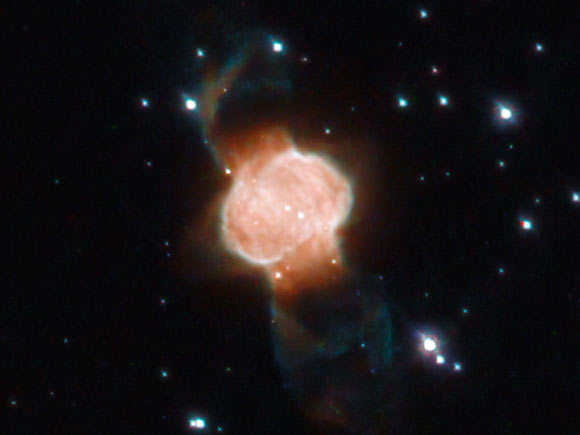M1-63 is a bipolar planetary nebula located in the small southern constellation of Scutum.
Also known as VV 209, IRAS 18486-1314 and 2MASS J18513095-1310367, it lies at a distance of almost 32,000 light-years from Earth.
“A nebula like this one is formed when the star at its center sheds huge quantities of material from its outer layers, leaving behind a spectacular cloud of gas and dust,” Hubble astronomers said.
“It is believed that a binary system of stars at the center of the bipolar nebula is capable of creating hourglass or butterfly-like shapes like the one in this image.”
“This is because the material from the shedding star is funneled towards its poles, with the help of the companion, creating the distinctive double-lobed structure seen in nebulae such as M1-63.”
Continued...
Source
Also known as VV 209, IRAS 18486-1314 and 2MASS J18513095-1310367, it lies at a distance of almost 32,000 light-years from Earth.
“A nebula like this one is formed when the star at its center sheds huge quantities of material from its outer layers, leaving behind a spectacular cloud of gas and dust,” Hubble astronomers said.
“It is believed that a binary system of stars at the center of the bipolar nebula is capable of creating hourglass or butterfly-like shapes like the one in this image.”
“This is because the material from the shedding star is funneled towards its poles, with the help of the companion, creating the distinctive double-lobed structure seen in nebulae such as M1-63.”
Continued...
Source






















